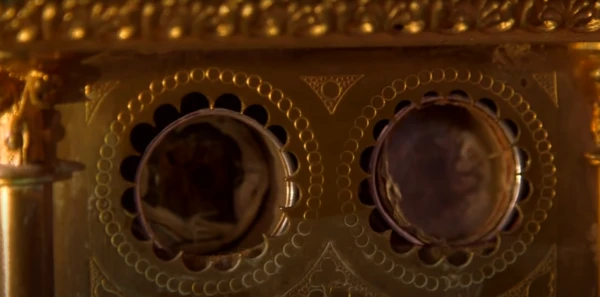Washington, D.C. Newsroom, Jul 23, 2022 / 07:27 am
Whoever broke into a medieval French church last month and stole a golden reliquary containing what is said to be the Precious Blood of Jesus appears to have had second thoughts.
It seems that once the thieves discovered that the box contained a relic of Jesus, they wanted nothing to do with it.
“They had no idea what they had stolen until they found out on the internet,” Arthur Brand, a Dutch investigator who specializes in recovering high-profile artifacts and stolen works of art, told CNA, “and that’s when they start panicking a bit.”
Brand, whose resume includes the reclamation of a $28 million Picasso and a set of bronze horses once owned by Adolph Hitler, learned of their misgivings from an email that appeared in his inbox one day.
The email purported to be from someone speaking on behalf of the thieves, who weeks earlier had pinched the ornate, centuries-old box from the sacristy of Holy Trinity Abbey in the town of Fécamp in Normandy, France.
Would Brand help them return it to the abbey? No questions asked?
The seasoned detective understood their predicament.
“First of all, you can’t sell such a relic, of course. And apart from that, I think they thought it would bring them very bad luck,” he explained. “So they said, ‘We want to return it, but we don’t want to get caught.’”
The emailer made Brand, a Catholic, an offer he couldn’t refuse. Unless he agreed to take the reliquary off the thieves’ hands, they’d destroy it.

Brand's doorbell rang a few days later. Peeking out the window, he could see the outlines of a cardboard box in the dark.
“I went downstairs and there it was,” he said. The next thing he knew he was holding the vessel containing the two lead vials said to contain the blood of Jesus.
An ‘emotional’ reaction
The Benedictine monastery in Fécamp was a major medieval pilgrimage site beginning in the 12th century. The relic, which was housed there, drew Christians from across Europe. According to legend, the vials contain drops of blood from Jesus that were hidden in a fig tree in the Holy Land, which then floated across the ocean, eventually landing on a beach in Normandy.
Now, this priceless relic was in Brand’s home in Amsterdam. The experience, he said, made him more “emotional” than he had ever been following the recovery of any stolen work of art.
“Because of the importance of the relic, because of everything in it, the whole Middle Ages, Jesus, everything. It’s the recovery that made me the most emotional, of all the pieces I have recovered,” he said.
(Story continues below)
“It was a very deep feeling, you must understand. This relic, according to legend, was in this church for some 1,500 years. Millions of people in those 1,500 years traveled, some having walked for hundreds of miles, to see the blood of Jesus,” he said. “They went there to pray for their son to return from the Crusades or their daughter who was caught by the plague.”

Brand, describing himself as a “believer,” says he prays every night. “I try to behave, which is not always that easy, of course,” he said.
While the reliquary was in his house, he said he avoided swearing and was careful about what he said and did.
“I tried to behave even more. It was like you have something in your home which you know is so important to so many people for so many centuries,” he said, “I tried to behave a bit more just out of respect for all these people who have been praying before this relic for all of these centuries.”
Did the reliquary have the same effect on the thieves, prompting them to return it?
Perhaps, Brand said. But in his experience, he said, criminals generally do not steal from churches.
“I know a lot of thieves who would steal from an old woman but would never steal a penny from a church because they think it’s really bad luck,” he said.
"In their minds, they believe that they could be cursed. Whether they are Catholic, or superstitious, or don’t believe in anything, they still don’t want to risk it,” Brand explained.
Upon learning of the reliquary’s recovery, Le Havre’s Bishop Jean-Luc Brunin said it was “a great relief for the Catholic community” because “the ancient tradition of the Precious Blood has been part of the history of our city," The Tablet reported.
As the police finish up their investigation and prepare to return the reliquary to its rightful home in France, Brand is returning to his “cold cases.” He's particularly anxious to recover the paintings stolen from the Isabella Stewart Gardener Museum in Boston in 1990.
Perhaps the publicity he has received from the stolen relic of the Precious Blood might lead to a break in that case, Brand mused.
“Maybe if somebody knows where these paintings are, and hopefully he’s Catholic and reads your story, these paintings could come back, too,'' he told CNA.
“My doorstep might be a little bit too far for them, but we will find a way.”






